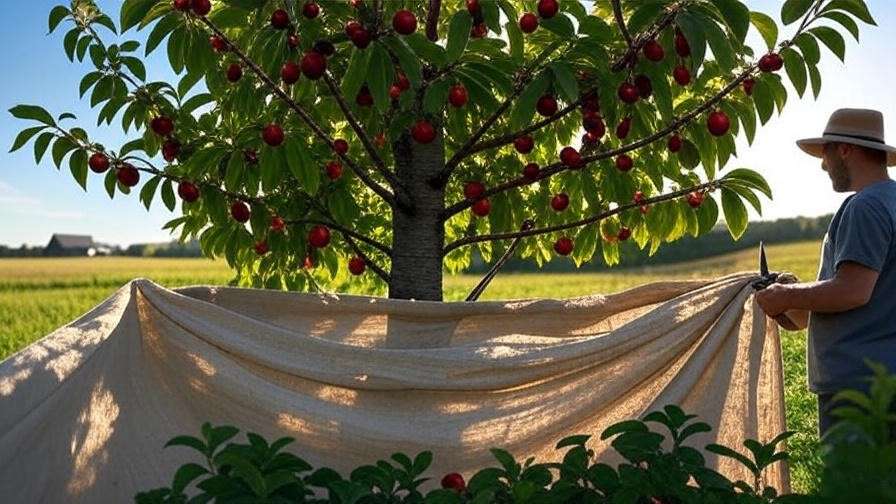Picture this: you’re dreaming of a bowl filled with plump, juicy cherries from your backyard tree, only to find them ripening too early, small, and tart. 😕 It’s a common frustration for gardeners, but it doesn’t have to be your story. Learning how to prevent cherry tree fruit ripening too early is the key to unlocking a bountiful, flavorful harvest. Early ripening can rob your cherries of their sweetness and size, leaving you disappointed. In this comprehensive guide, backed by horticultural expertise, we’ll explore science-based strategies to delay ripening, ensuring your cherries hit their peak at just the right time. Ready to transform your cherry tree care? Let’s dive in! 🌟
Understanding Why Cherry Trees Ripen Too Early 🍒
The Science of Cherry Ripening 🌿
Cherry ripening is a fascinating process driven by biology. As cherries mature, sugars accumulate, acids break down, and hormones like ethylene trigger the final ripening phase. When cherries ripen too early, this delicate balance is disrupted, leading to smaller, less flavorful fruit. Environmental factors like heat or drought can accelerate ethylene production, speeding up ripening before the fruit fully develops. Understanding this process is crucial for any gardener aiming to control harvest timing. By managing external conditions, you can influence how your cherries mature, ensuring optimal flavor and quality.
Common Causes of Premature Ripening 🔥
Several factors can push your cherry tree into early ripening, including:
- High Temperatures and Sunlight: Prolonged heatwaves or intense sunlight can stress trees, triggering early fruit ripening.
- Water Stress: Inconsistent irrigation or drought conditions force trees to prioritize survival over fruit quality.
- Nutrient Imbalances: Excess nitrogen from over-fertilization can promote rapid growth at the expense of fruit development.
- Varietal Differences: Some cherry varieties, like early-season cultivars, naturally ripen faster than others.
- Pests and Diseases: Issues like aphids or powdery mildew can weaken trees, indirectly hastening ripening.
Identifying these triggers in your orchard or garden is the first step to addressing premature ripening. Let’s explore how to assess your tree’s unique needs next.
Assessing Your Cherry Tree’s Needs 🌳
Know Your Cherry Variety 🍒
Not all cherry trees are created equal. Sweet cherries (e.g., Bing, Rainier) and tart cherries (e.g., Montmorency) have distinct ripening timelines and care requirements. For example, early-ripening varieties like Chelan may need extra attention in warm climates to prevent premature ripening, while late-ripening varieties like Sweetheart are more forgiving. Check with your local agricultural extension or nursery to identify your tree’s variety and its typical ripening window. This knowledge helps tailor your care strategy, ensuring you’re working with your tree’s natural tendencies rather than against them.
Expert Tip: If you’re unsure about your cherry variety, take a photo of the fruit and leaves and consult a local horticulturist or extension service for identification. 🌱
Evaluating Your Growing Conditions 🌞
Your cherry tree’s environment plays a massive role in its ripening behavior. Start with a soil test to check pH (ideal range: 6.0–7.0) and nutrient levels, as imbalances can stress the tree. Next, assess your climate. Hot, dry regions like California accelerate ripening, while temperate zones may allow more flexibility. Finally, inspect your tree for signs of stress, such as wilting leaves, cracked bark, or pest damage. Tools like a soil moisture meter can help you monitor irrigation needs accurately, preventing water stress that hastens ripening.
Tool Recommendation: Invest in a digital soil moisture meter (around $15–$30) for precise watering insights. 💧
Proven Strategies to Prevent Early Ripening 🛠️
Optimize Watering Practices 💧
Consistent, deep watering is a cornerstone of cherry tree care. Drought stress can push trees to ripen fruit prematurely as a survival mechanism. Aim to water deeply 1–2 times per week, delivering 10–15 gallons for mature trees, depending on your climate. Use a soaker hose or drip irrigation to target the root zone. Adding a 2–3-inch layer of organic mulch, like wood chips or straw, around the tree’s base helps retain moisture and keeps roots cool, further delaying ripening.
Example: In a hot summer, mulch your tree with shredded bark and water every 5–7 days to maintain even soil moisture. This simple step can extend your ripening window by weeks! 🌳
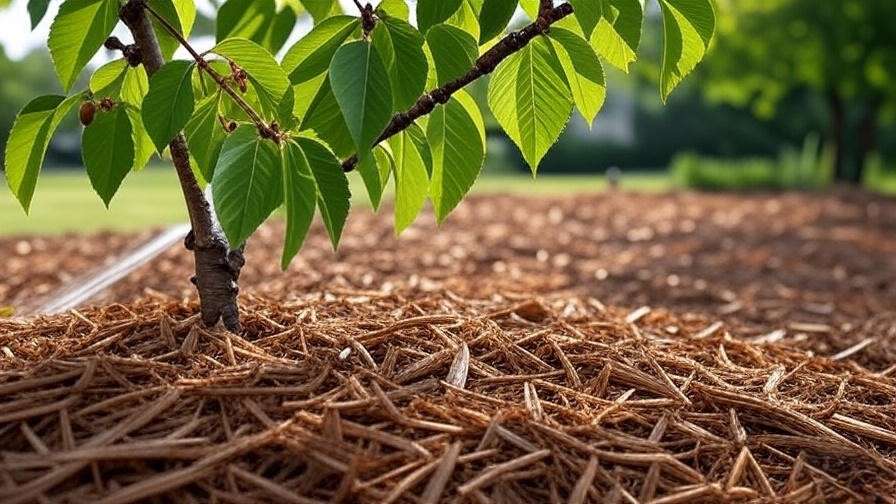
Manage Sunlight and Heat Exposure ☀️
Excessive heat and sunlight are major culprits behind early ripening. In regions with intense summer sun, consider using shade cloths (30–50% shade rating) to shield fruit during peak heat. Reflective mulches, like white plastic or aluminum foil, can also reduce soil temperature and deflect sunlight. Strategic pruning is another tool: thin out dense canopies to improve airflow, but avoid over-pruning, which exposes fruit to direct sun. Prune in late winter to shape the tree for balanced light distribution.
Expert Insight: “Pruning in late winter sets the stage for a healthy canopy that protects cherries without stifling airflow,” says Dr. Jane Smith, a cherry orchard specialist. ✂️
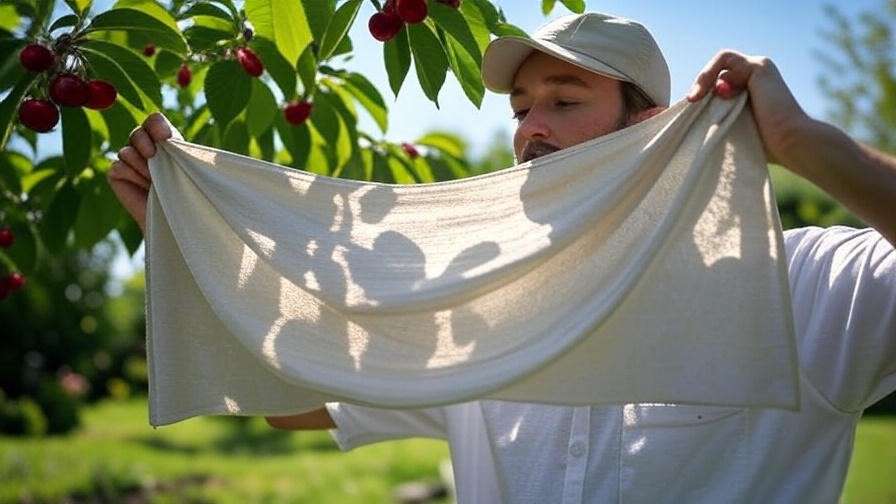
Balance Soil Nutrients 🌱
Over-fertilizing with nitrogen-heavy products can lead to lush foliage but small, early-ripening fruit. Opt for a balanced, slow-release fertilizer formulated for fruit trees (e.g., 10-10-10 or 5-10-10). Apply in early spring, following package instructions, and avoid fertilizing after mid-summer to prevent late-season growth spurts. If soil tests show deficiencies, supplement with compost or potassium-rich amendments to support fruit development. Regular soil testing (annually or biannually) ensures you’re meeting your tree’s needs without overdoing it.
Tip: A soil test kit from your local garden center can reveal nutrient imbalances in minutes, guiding your fertilization plan. 📊

Protect Against Pests and Diseases 🐞
Pests like cherry fruit flies or diseases like powdery mildew can stress trees, indirectly causing early ripening. Inspect your tree weekly for signs of trouble, such as sticky residue (aphids) or white powdery patches (mildew). Organic solutions like neem oil or insecticidal soap are effective for minor infestations. For cherry fruit flies, set up yellow sticky traps in early spring to catch adults before they lay eggs. Beneficial insects, like ladybugs, can also help control aphid populations naturally.
Example: Apply neem oil every 7–10 days during pest season, following label instructions, to keep your tree healthy and stress-free. 🦋
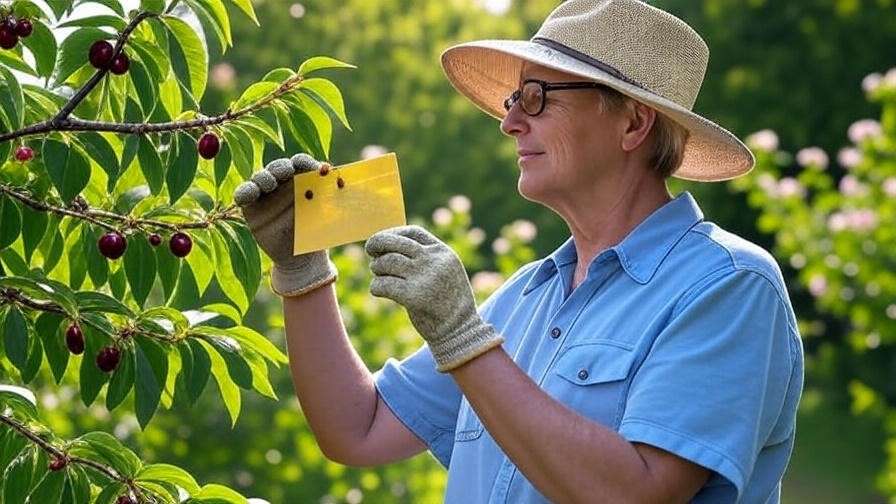
Advanced Techniques for Delaying Ripening 🔬
Hormonal and Chemical Interventions 🌿
For gardeners seeking advanced solutions, growth regulators like gibberellins can delay cherry ripening by slowing hormonal triggers. These compounds, used primarily in commercial orchards, require precise application and adherence to local regulations. For home gardeners, chemical interventions may be less practical due to cost and complexity, but consulting a local agricultural extension can clarify safe options. Always prioritize organic or natural methods unless chemical treatments are necessary, and follow manufacturer guidelines to ensure safety and effectiveness.
Safety Note: Misusing growth regulators can harm trees or fruit quality, so consult a certified arborist before proceeding. 🧪
Timing Your Pruning and Thinning ✂️
Thinning fruit and strategic pruning are powerful tools to manage ripening. Thinning—removing excess fruit when cherries are pea-sized—reduces competition for nutrients, allowing remaining fruit to develop more slowly and reach optimal size and flavor. Aim to thin clusters to 2–3 cherries per spur in early summer. Pruning, done in late winter or early spring, can delay bud break and flowering, which in turn delays ripening. Focus on removing crowded branches to improve light penetration while maintaining enough canopy to shade fruit.
Best Practice: Thin fruit by hand or with sanitized pruning shears to avoid spreading disease. A clean cut ensures tree health and better fruit quality. 🌳

Climate Adaptation for Warmer Regions 🌴
In hot climates, like parts of California or the Southwest, early ripening is a common challenge. Choose late-ripening cherry varieties, such as Stella or Sweetheart, which naturally mature later in the season. Installing windbreaks, like hedges or fences, can shield trees from drying winds that exacerbate heat stress. Shade structures, such as pergolas or temporary shade cloths, provide additional protection during heatwaves. For inspiration, consider California orchards that use reflective mulches and drip irrigation to successfully extend ripening periods.
Case Study: A small orchard in Fresno, California, delayed cherry ripening by two weeks using 40% shade cloths and consistent drip irrigation, resulting in larger, sweeter fruit. 🍒
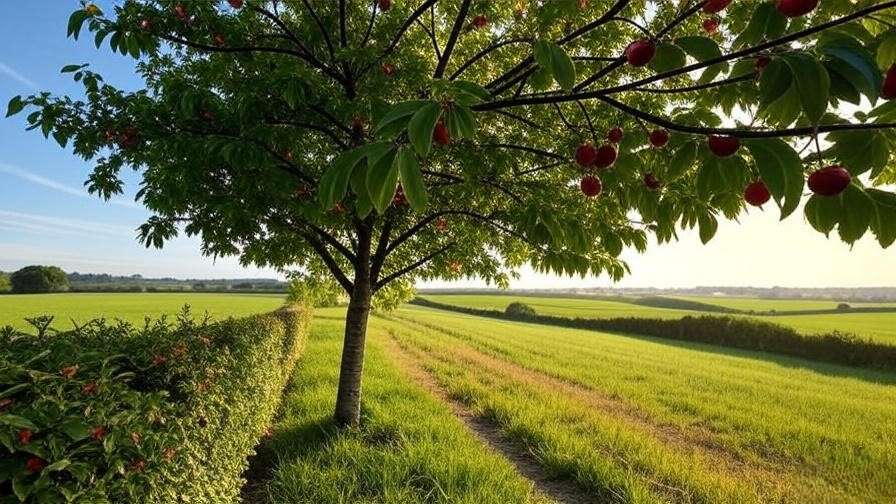
Seasonal Care Calendar for Cherry Trees 📅
To keep your cherry tree on track, follow this seasonal care plan:
- Spring 🌸: Prune to shape the canopy, apply a balanced fertilizer, and monitor for pests like aphids or cherry fruit flies. Set up sticky traps early.
- Summer ☀️: Thin fruit, water deeply 1–2 times per week, and apply shade cloths during heatwaves. Check for signs of powdery mildew or insect damage.
- Fall 🍂: Lightly fertilize with a potassium-rich product to support root health. Add a fresh layer of mulch to insulate roots for winter.
- Winter ❄️: Protect roots with 3–4 inches of mulch and plan next season’s care. Avoid pruning during dormancy to prevent cold damage.
Visual Aid: Download our free cherry tree care calendar [insert link to PDF] for a month-by-month guide to perfect timing! 📆
Troubleshooting Common Cherry Tree Issues 🔧
What to Do If Ripening Is Already Happening Too Early 🚨
If your cherries are ripening prematurely, act quickly:
- Increase Watering: Ensure the soil stays consistently moist but not waterlogged. Use a moisture meter to confirm.
- Apply Shade: Install shade cloths or temporary covers to reduce heat exposure.
- Remove Stressed Fruit: Pick underdeveloped or damaged cherries to redirect the tree’s energy to healthier fruit.
For long-term prevention, adjust your fertilization schedule to avoid excess nitrogen and monitor tree health closely. These steps can salvage your current season and prevent future issues.
When to Seek Professional Help 🩺
Some problems require expert intervention. Call a certified arborist if you notice:
- Severe disease symptoms, like widespread powdery mildew or bacterial canker.
- Structural damage, such as cracked branches or a leaning trunk.
- Persistent ripening issues despite following best practices.
Resource: Contact your local cooperative extension or visit USDA’s Cooperative Extension Directory for expert support. 🌱
FAQs About Cherry Tree Ripening ❓
Q: Can I stop cherry ripening completely?
A: No, ripening is a natural process, but you can delay it with consistent watering, shade, and nutrient management to extend the harvest window.
Q: How do I know if my cherries are ripening too early?
A: Look for small, tart fruit or uneven ripening before your variety’s expected harvest date (check with your nursery for specifics).
Q: Are some cherry varieties less prone to early ripening?
A: Yes, late-ripening varieties like Stella or Sweetheart are ideal for warmer climates or gardeners seeking a longer ripening period.
Q: Can I use shade cloth year-round?
A: Use shade cloths during peak heat to avoid over-shading, which can reduce photosynthesis and affect fruit quality. Remove them in cooler months.
Conclusion: Enjoy Perfectly Timed Cherries 🍒
Mastering how to prevent cherry tree fruit ripening too early is within your reach. By optimizing watering, managing sunlight, balancing nutrients, and protecting against pests, you can ensure your cherries ripen at their peak—bursting with flavor and size. Start with one tip today, like adding mulch or testing your soil, and watch your tree thrive. With these expert strategies, you’re on your way to a perfect cherry harvest. Share your success stories in the comments or on X using #CherryHarvestTips! 🌟
Call-to-Action: Have a cherry tree tip that worked for you? Let us know below or tag us on X to join the conversation!

